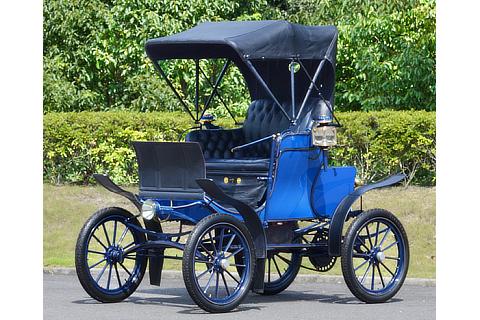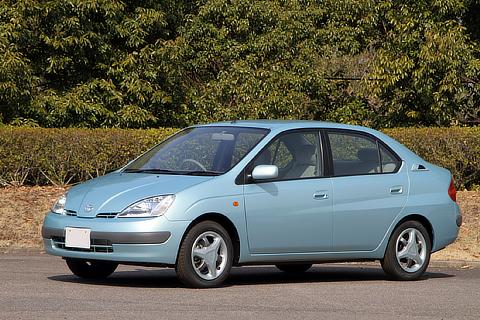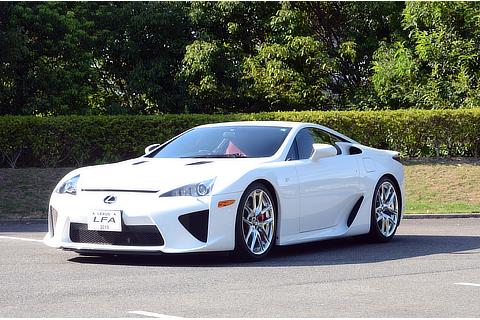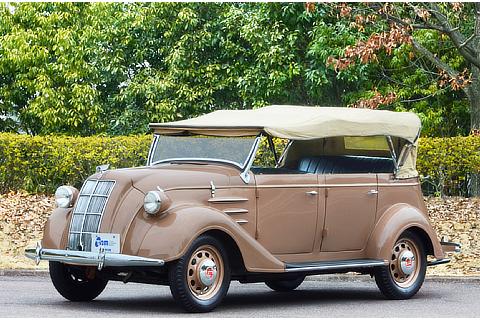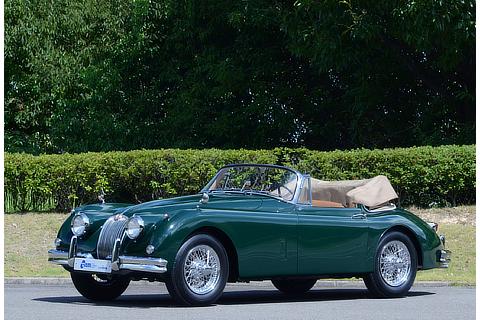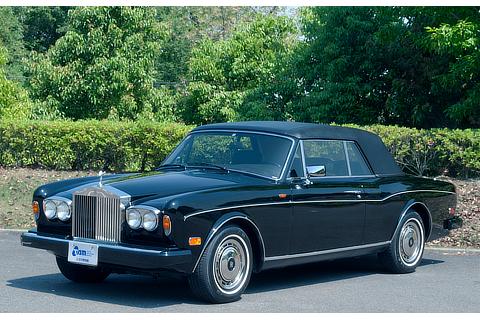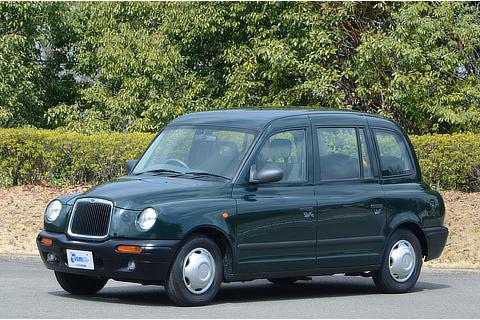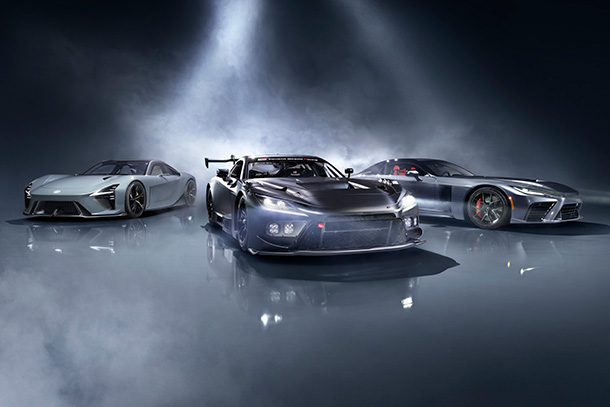Sep. 20, 2019
Toyota to Hold 30th Toyota Automobile Museum Classic Car Festival in JapanFeaturing a street parade and special exhibition entitled "Cars That Symbolize the Ages"
Toyota City, Japan, September 20, 2019―The Toyota Automobile Museum will hold its 30th Classic Car Festival at the Aichi Expo Memorial Park in Nagakute City, Aichi Prefecture, on October 27. The Classic Car Festival is aimed at promoting car culture, and leaving a legacy in the local community. A diverse selection of events will be held for visitors to enjoy, centered on the Aichi Expo Memorial Park, including a parade on public roads of privately-owned Japanese, American, and European classic cars dating from 1989 or earlier.
A variety of events have been planned to mark the 30th edition of the festival. The parade route has been designed to enable as many people as possible to cheer and watch from the roadside. Approximately 150 privately owned cars will drive in chronological order from the Toyota Automobile Museum, through Nagakute City, to Aichi Expo Memorial Park. Following the parade, a special exhibition zone will be created for cars dating from 1989.
A special exhibition entitled "Cars That Symbolize the Ages" will commemorate the change to the Reiwa Era, and six symbolic cars dating from the Meiji (1868-1912), Taisho (1912-1926), Showa (1926-1989), and Heisei (1989-2019) Eras will be on display and take part in parade runs. Takahiko Kozuka, the former figure skater and current JOC Sports Environment Ambassador who turned 30 this year, will attend the exhibition as a special guest.
Naoaki Nunogaki, director of the Toyota Automobile Museum, commented on the festival: "This is said to be a period of major change in the field of mobility; however, even in periods of change, there are things that remain the same. Since cars are products that transport people, I believe they must continue to inspire affection. Some 150 classic cars that have been cherished by their owners across Japan will take part in the parade, and I very much hope that they will bring happiness to those who watch on from the roadside."
Overview of the Toyota Automobile Museum Classic Car Festival
| Date | October 27, 2019 |
|---|---|
| Time | 9:30-16:00 (rain or shine) |
| Main Location | Aichi Expo Memorial Park (Moricoro Park), Nagakute City The parade starts at the Toyota Automobile Museum at 8:45 |
| Exhibits | Approximately 150 privately owned classic cars and 10 cars from the Toyota Automobile Museum Collection |
| Admission | Free of charge |
Details
- Classic Car Parade (8:45-11:00)
Approximately 150 pre-1989, privately owned cars from Japan, the U.S., and Europe
The parade route is approximately 14 kilometers in length, and will take place on public roads in Nagakute City.
- Route
- Toyota Automobile Museum
―Waki Intersection
―Ichigahora Intersection
―Iwasaki Takenoyama Kita Intersection
―Nagakute City Office
―Nagakute Onsen Gozarasse
―Aichi Memorial Park
- Note
- After the parade, a draw for Toyota Automobile goods will be held at Nagakute Onsen Gozarasse on the parade route (from 8:45, pamphlets containing raffle tickets will be distributed to the first 500 people to arrive).
- Vehicle Exhibition (9:30-16:00)
Exhibition featuring privately owned vehicles from the parade alongside vehicles from the Toyota Automobile Museum
Special Exhibition of Vehicles from the Toyota Automobile Collection "Meiji, Taisho, Showa, and Heisei: Cars That Symbolize the Ages"
Meiji
- Baker Electric (1902, U.S.A.)
Despite the emergence of gasoline cars, American manufacturers continued to produce electric cars for some time. The Baker Electric was popular as it was quiet, discharged very little fumes, and no gear changing was required making it easy to drive. This model was capable of running at a speed of 40 km/h with a 1 hp motor.
Taisho
- Franklin Series 9-B (1918, U.S.A.)
When many manufacturers increased size in pursuit of performance, Franklin took the unique path of an air-cooled engine and lighter weight that boasted excellent performance. The Series 9-B was equipped with the latest technologies, including the world's first air-cooled in-line six-cylinder engine and aluminum body.
Showa
- Subaru 360 Model K111 (1959, Japan)
Fuji Heavy Industries' first mass-produced mini passenger car was developed with the goal of being a "people's car." Characterized by a compact, lightweight body that seated four adults in comfort, and with driving performance superior to the standards of the era, the 360 Model K111 was from its launch a best-selling mini passenger car for approximately 10 years.
- Toyota 2000GT (Late-type) (1969, Japan)
The 2000GT was unveiled at the 1965 Tokyo Motor Show. A high-performance Gran Turismo model, it was developed together with Yamaha Motor Co., Ltd. and featured the best technologies of its era. Before it was made available for sale, the 2000GT established three world records and 13 international records for continuous high-speed and endurance runs, and significantly altered views of Japanese cars.
Heisei
- Toyota Prius (1997, Japan) Vehicle owned by MEGA WEB
The world's first mass-produced vehicle using a hybrid system. Combining an electric motor and a gasoline engine, the hybrid system could optimize the output for various driving conditions. It achieved ground-breaking improvement in fuel economy and a substantial reduction in CO2 emissions.
- Lexus LFA (prototype) (2010, Japan)
The LFA was developed as the pinnacle of the Lexus brand's line-up of premium sports "F" vehicles. Only 500 units of this exclusive model were produced; they were distributed in 56 countries around the world, with 165 sold in Japan. The LFA featured a carbon fiber-reinforced polymer (CFRP) monocoque chassis, and a 4.8-liter V10 engine co-developed with Yamaha Motor Co., Ltd.
- Classic Car Circuit (CCC) (a. 11:50-12:40 b. 13:25-14:15)
Cars housed at the Toyota Automobile Museum (see below) and privately owned cars will be driven inside the venue. Cars housed at the museum will run during both a. and b. Privately owned cars will be divided into four groups by theme, with a total of about 20 cars running between both sessions.
- Classic Car Studio (CCS) (11:35-11:45)
Live coverage of events inside the venue.
- Commemorative ride photos (9:30-16:00)
- Toyota Model AB Phaeton (1938, Japan)
The Model AB Phaeton was an open-top version of the Model AA; however, its body design was completely different to the Model AA. It was launched in 1936 with a price of 3,300 yen, and only 353 units were produced until 1945; the majority were used by the military under the codename ABR, with few reaching the hands of civilians.
- Jaguar XK150S (1961, U.K.)
The XK150S was launched in 1957 as the successor to the XK120 and XK140, two cars that had built Jaguar's reputation in the 1950s. It featured a modern design in which the fender lines were almost fully integrated into the body. The S-spec model was equipped with the same high-performance engine as the C-type that participated in the 24 Hours of Le Mans.
- MG Midget Type TA (1937, U.K.)
The Midget was a compact, lightweight sports car that was built using components from the mass-produced Morris. One of the first British-made lightweight sports cars, the Midget helped spread the joy of sports driving throughout the world.
- Test rides (a. 12:30-13:00 b. 13:30-14:00 c. 14:30-15:00)
- Rolls-Royce Corniche III (1991, U.K.)
Corniche is the name of a coastal road in southern France. The vehicle was the highest class of private car, created with resort vacations in mind. The same model was used in the royal parade following the wedding of the then Crown Prince (present Emperor) of Japan in 1993.
- Jeepney (1991, Philippines)
These vehicles are widely used as a bus by the general public in the Philippines. Many are converted jeeps disposed of by the U.S. Army, and are built using a wide array of used parts. Jeepneys are also notable for their colorful, attention-grabbing styling and ornamentation.
- LTI TX1 (London Taxi) (2001, U.K.)
Introduced in 1997, this is the successor to the familiar Austin FX used as London taxis for almost 40 years since 1958. It continues the tradition of the London taxi which is able to fit through narrow spots and features a turning radius of 3.8 meters.
- All events (9:30-16:00)
- Traffic safety zone
- Traffic safety zone Toyota Safety Support Car participatory event (pre-collision system); VR experience regarding automated driving risks
- Distribution of reflective materials: a special collaborative design featuring the Toyota 2000GT and the children's TV characters Morizo and Kikkoro
- Market zone
Featuring food trucks and stalls set up by Nagakute City restaurants
- Support for areas affected by the Great East Japan Earthquake and the 2016 Kumamoto Earthquakes, etc.
A special 30th anniversary coaster and pin-back button set will be on sale, with proceeds donated to relief efforts via the Japanese Red Cross Society.
- Museum shop
Items for sale include miniature cars and the popular Toyota Automobile Museum Curry.
- Tie-ups with non-Classic Car Festival events
- Linimo Autumn Colors Walking Tour (Start time: 9:30-11:30, ends by 14:30)
Participants walk an approximately seven-kilometer route from Linimo Irigaike Koen Station to the Aichi Expo Memorial Park. The first 2,000 people to complete the walk will receive a specially designed pin-back button.
- Let's All cheer for the Tokyo 2020 in Morikoro Park!
Let's all dance the Paprika Dance with the Tokyo 2020 Mascots MIRAITOWA and SOMEITY! First dance: 9:30-10:00; Second dance: 14:15-14:45Toyota is a Worldwide Olympic and Paralympic Partner.
- Note
- In the event of poor weather conditions, some vehicles may not be displayed
Getting to the Venues (The following means of transport will be provided to alleviate traffic near the event venues.)
- Advantage of using the Linimo train line
Linimo passengers who show proof of boarding documents at either the information kiosk at Aichi Expo Memorial Park Oshibafu Hiroba or the first floor reception counter in the Automobile Gallery at the Toyota Automobile Museum will receive a free day pass to the Toyota Automobile Museum. Proof of boarding documents are distributed inside the Linimo Aichi Expo Memorial Park Station ticket gate between 8:30 and 15:00.
- Free shuttle buses will be traveling between three bus stops within Nagakute City every 15 minutes between 9:30 and 16:30. Bus stops: Aichi Expo Memorial Park Station, Toyota Automobile Museum, and Nagakute Onsen Gozarasse
- Park-and-ride is available for those who are driving to the event. A temporary parking lot (free; accommodates 300 cars) will be provided on the south side of the Toyota Automobile Museum. Switching to the Linimo line at Geidai-Dori Station allows the passenger to arrive at the Aichi Expo Memorial Park Station in 4 minutes on foot.
Sponsors, Co-sponsors, other
-
- Sponsors
- Aichi Prefecture, Nagakute City, Aichi Prefectural Board of Education, Nagakute City Board of Education, Aichi Urban Development Association, Nagakute City Tourist Exchange Association
-
- Co-sponsors
- Aichi Rapid Transit Co., Ltd., Nagakute Onsen Gozarasse Co., Ltd. / Agurin Mura
-
- Supporters
- Nagakute Society of Commerce and Industry, Global Industrial and Social Progress Research Institute
To learn more about the Toyota Automobile Museum, please visit https://www.toyota.co.jp/Museum/english/













